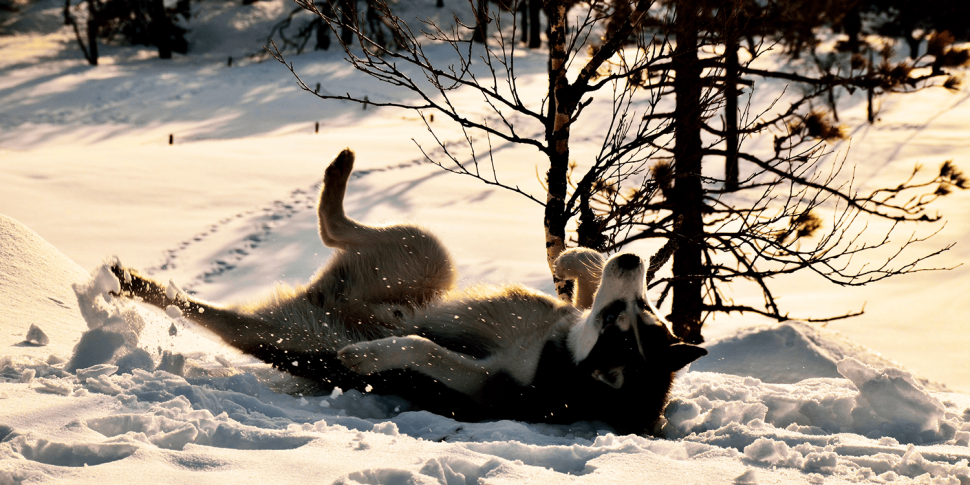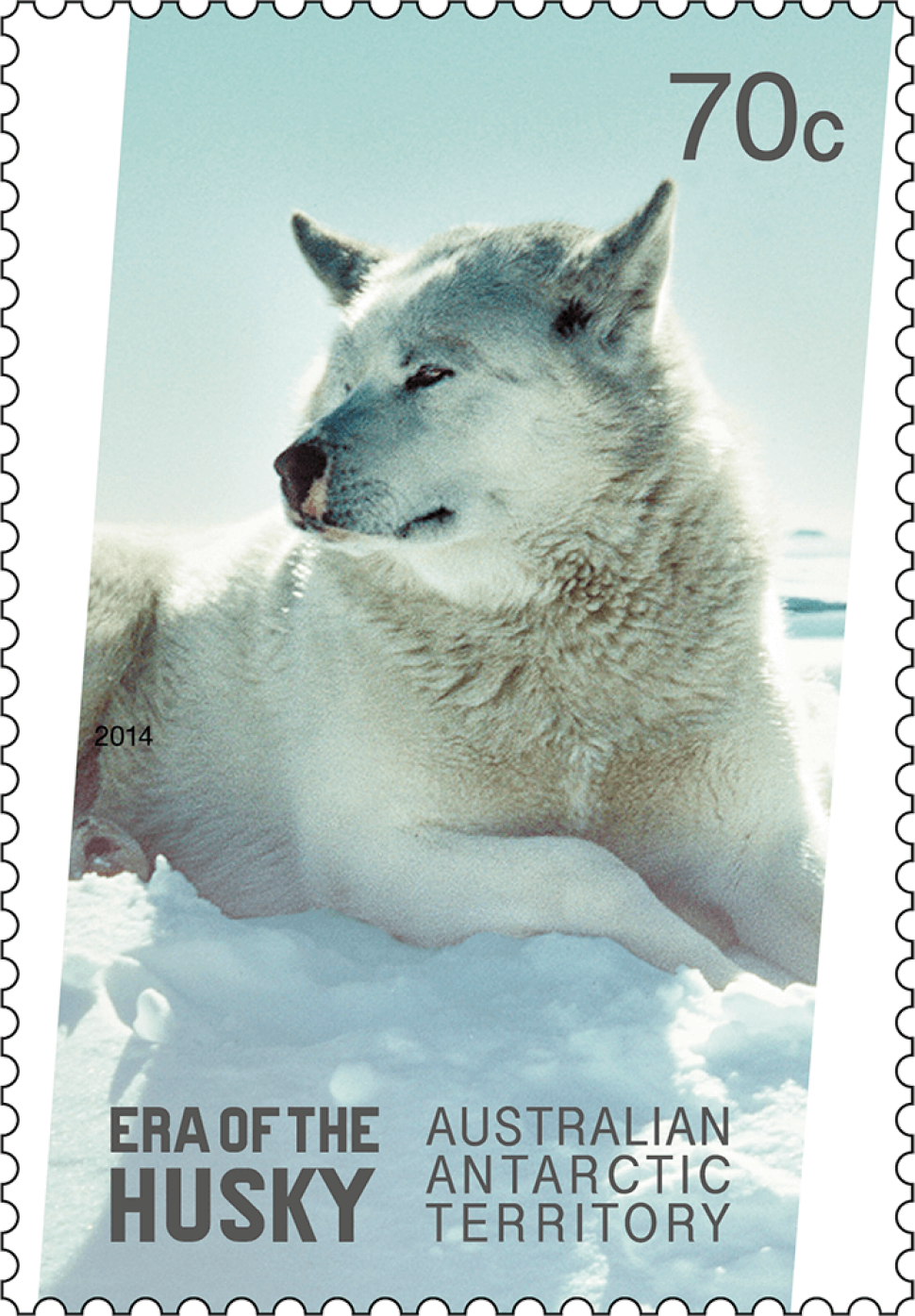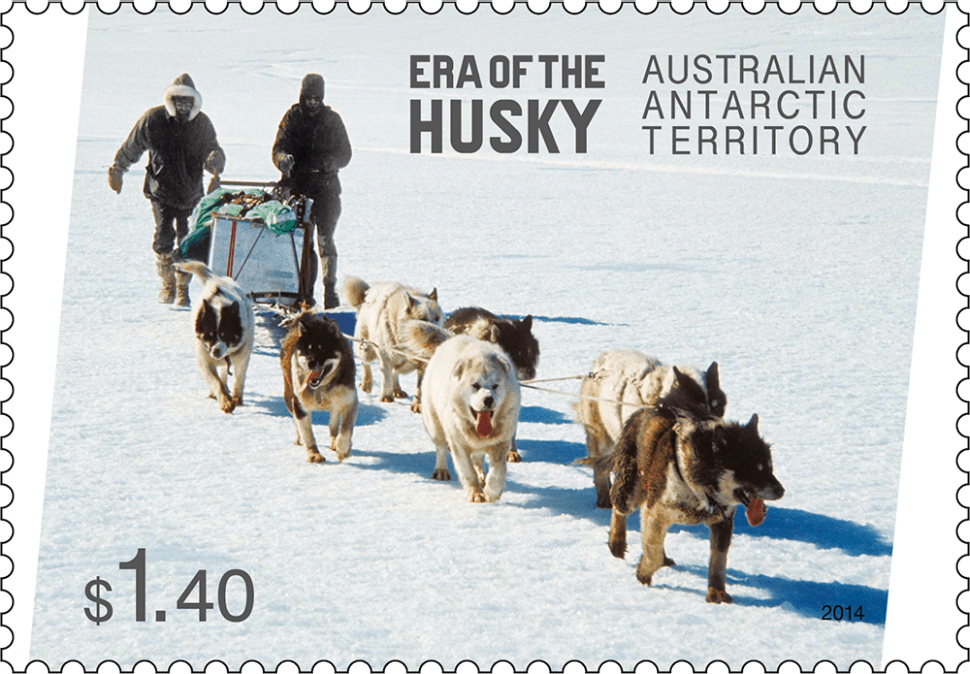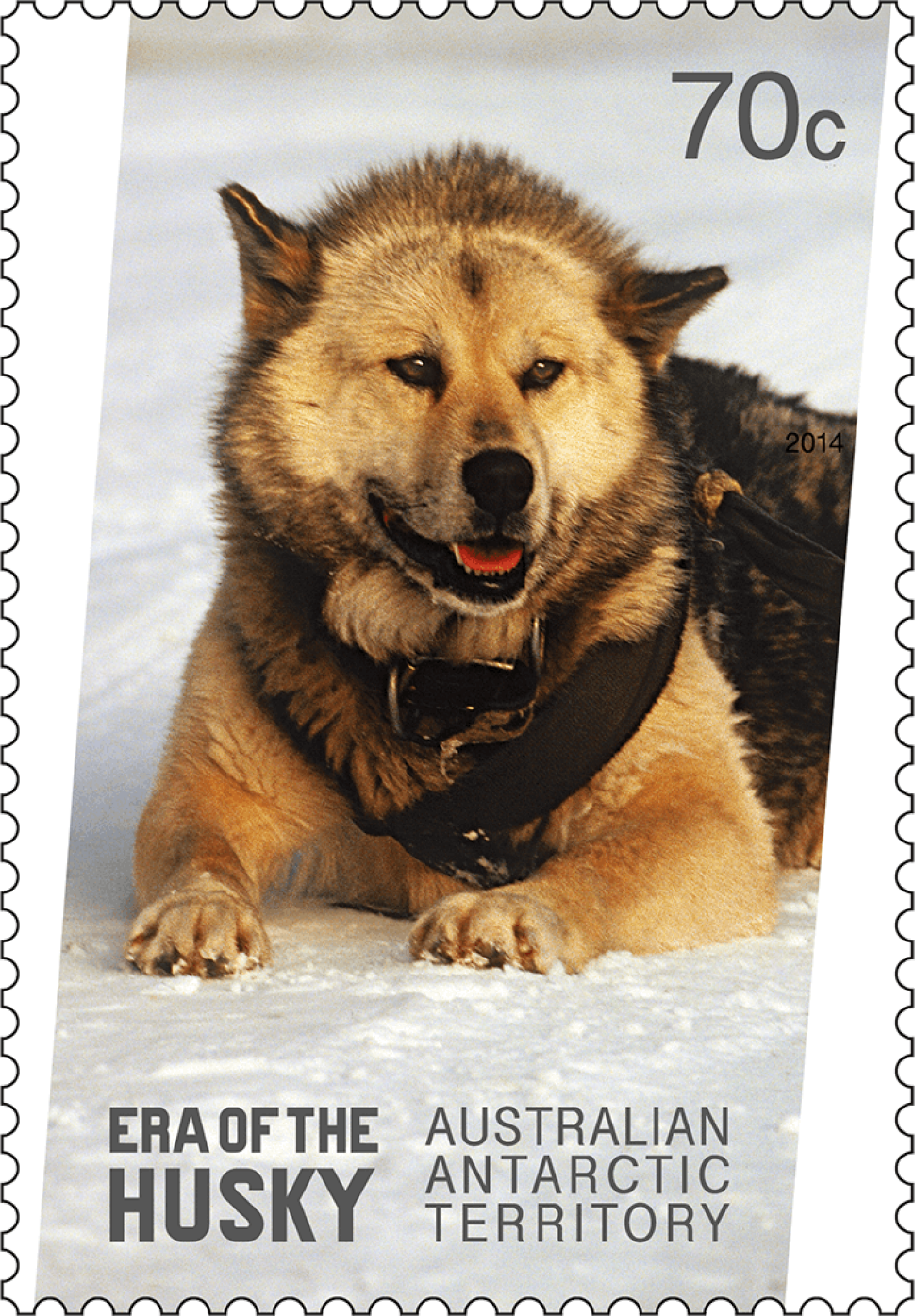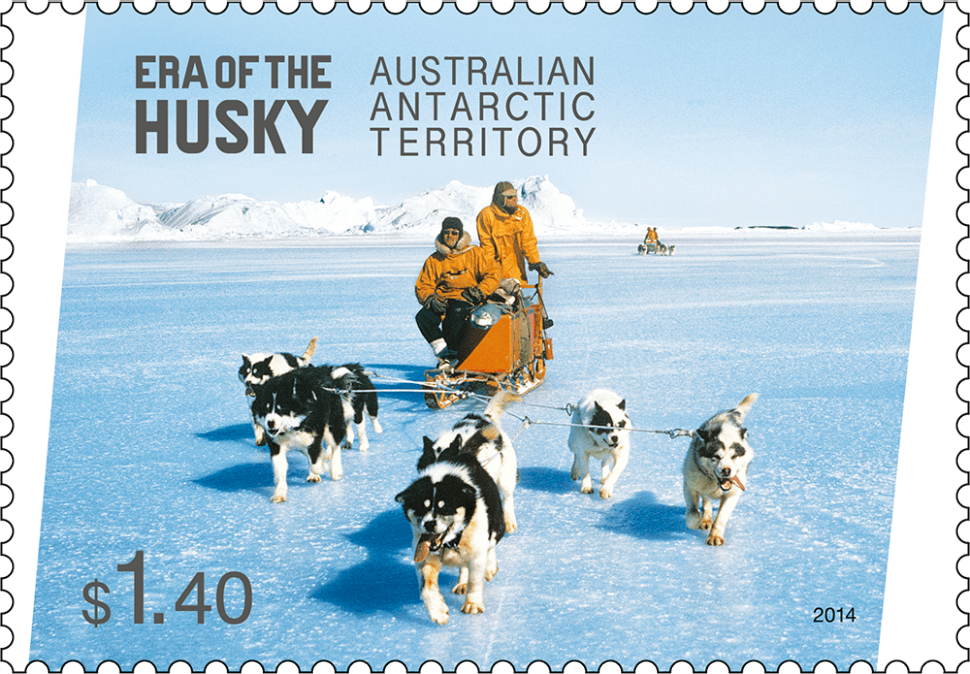The term husky commonly refers to snow or northern hemisphere dogs, and can include a wide range of breeds, such as the Siberian Husky, Alaskan Malamute, Samoyed, Finnish Spitz and more. This accounts for variations in look and personality that can be observed in “husky” dogs. Originating from the northern regions of the globe, these dogs are familiar with snow, ice, cold and wind. Their thick, double-layered coats protect them against extreme conditions.
Huskies were first used in Antarctica by the British Antarctic Expedition in 1898–1900, led by Norwegian Carstens Borchgrevink. The 90 dogs came from Greenland and were managed by two dog handlers. Little more than a decade later, Australian explorer Douglas Mawson used huskies during his 1911–14 Australasian Antarctic Expedition. In harness, these powerful dogs can haul between 50 and 90 kilograms; usually working in teams, the number of dogs would be determined by the weight of the load to be hauled.
In 1954, when Australia established its first permanent Antarctic station at Mawson, huskies were introduced to Australian territory. This continued to be their home for almost 40 years. These dogs had been bred from Greenland and Labrador huskies that had been left temporarily at Melbourne Zoo by a French expedition in 1948, which hadn’t been able to reach Antarctica due to extreme pack ice. The terms of agreement between the French and the Australian government stipulated that any dogs bred from those at the zoo would become Australian property. Several of the offspring were shipped to and trained at subantarctic Heard Island from 1950. Four years later 30 of these were taken to Mawson Station, followed a year later by another 15. In the early 1960s, huskies from New Zealand’s Scott Base and Greenland were introduced for diversity in the bloodline.
Huskies were a powerful and reliable form of transport on the harsh, icy continent. Typically, for a long journey, two teams of around nine dogs would be used, with supplies distributed between the sledges in case of one being lost in a crevasse or the like. The dogs would require close handling for the first hour or so of a journey, after which they would settle into a steady trot. While they were mainly used at Mawson Station, to a lesser extent huskies also worked at Casey and Davis stations. Not only were they working dogs, but huskies also provided companionship, love and loyalty to expeditioners; they were integral to morale at such a remote southern location.
The 1991 Protocol on Environmental Protection to the Antarctic Treaty banned all introduced species, except humans, from Antarctica. In 1993, the last remaining huskies left the Australian Antarctic Territory. The older dogs lived out their days in Australia; the younger dogs went to a new life in Minnesota, USA.
The two portrait stamps show individual dogs at rest; the two landscape-orientation designs show huskies working in teams the Australian Antarctic Territory. The analogue photography of the period gives the stamps an almost nostalgic cast of the pre-digital era in which the dogs resided in Antarctica. A right-leaning, angled pictorial window and the blocky type are both used to suggest the ice associated with Antarctica.
Designer
Jo Muré, Australia Post Design Studio.
Further reading
Australian Antarctic Division website, www.antarctica.gov.au/about-antarctica/history/transportation/ground-transportation/huskies
Jonathan Chester, Huskies: Polar Sledge Dogs, Margaret Hamilton Books, Sydney, 1994
Shelagh Robinson (ed.), Huskies in Harness: A love Story in Antarctica, Kangaroo Press, Kenthurst, NSW, 1995
Products released in this issue
- Stamps 2 x 70c, 2 x $1.40
- Minisheet
- Covers (blank pictorial, gummed and minisheet)
- Stamp pack
- Maxicard
- Booklet of 10
- Chequebook 20 x 10
- Gutter strips
Technical specifications
- Issue date
- 9 September 2014
- Issue withdrawal date
- 31 March 2015
- Denominations
- 2 x 70c, 2 x $1.40 se-tenant pairs
- Stamp design
- Jo Mure, Australia Post Design Studio
- Product design
- Jo Mure, Australia Post Design Studio
- Photographer
- Gary Backhouse
- Paper - gummed
- Tullis Russell
- Printer - gummed
- McKellar Renown
- Paper self-adhesive
- C100
- Printer self-adhesive
- McKellar Renown
- Printing process
- Lithography
- Stamp size
- 26mm x 37.5mm
- Minisheet size
- 37.5mm x 26mm
- Perforations
- 170mm x 80mm
- Sheet layout
- 13.86 x 14.60
- FDI postmark
- Kingston, TAS 7050
- FDI withdrawal date
- 8 October 2014
This content was produced at the time of the stamp issue release date and will not be updated.
